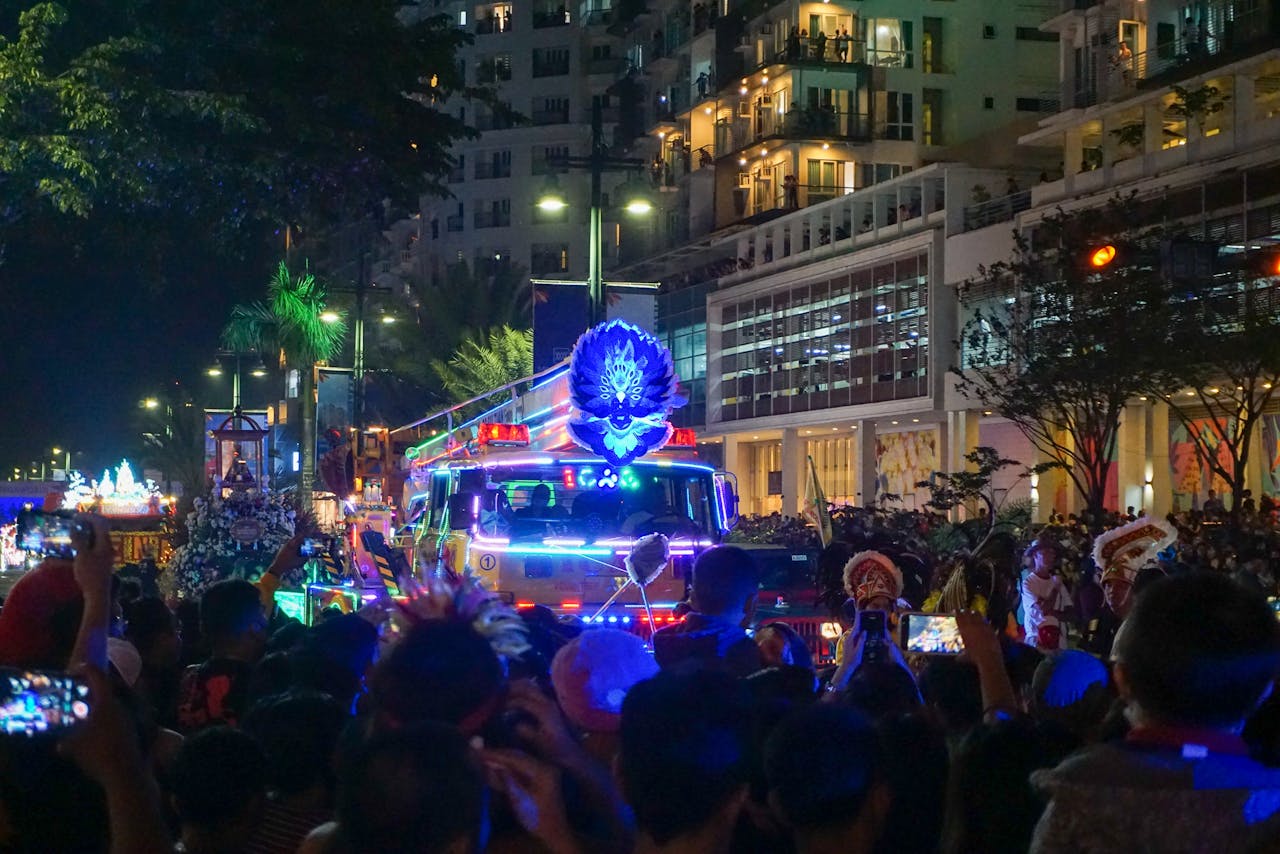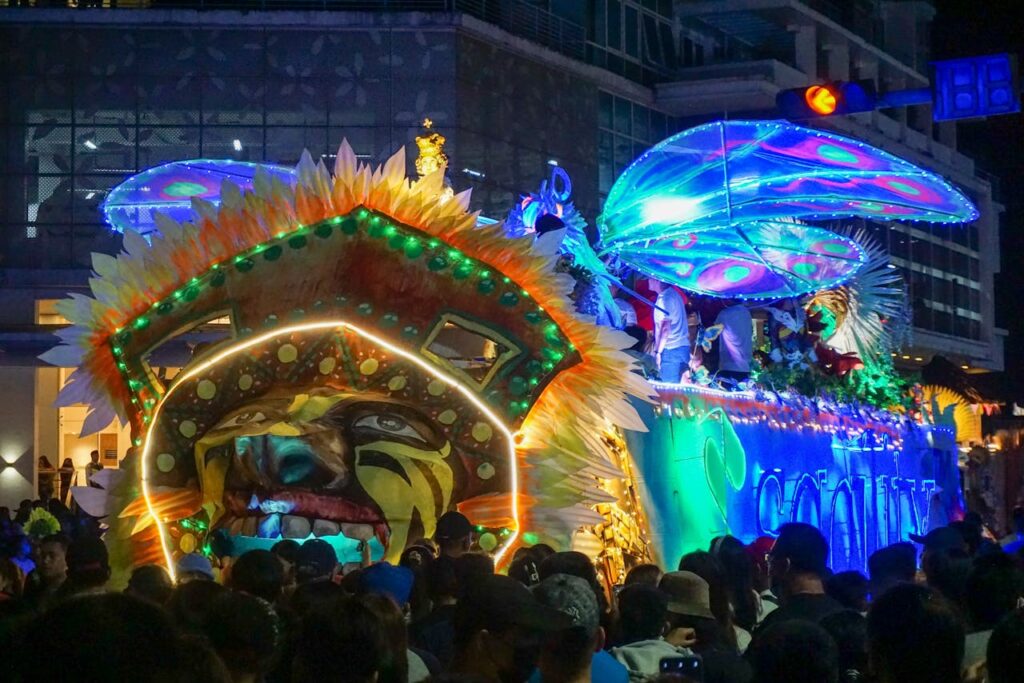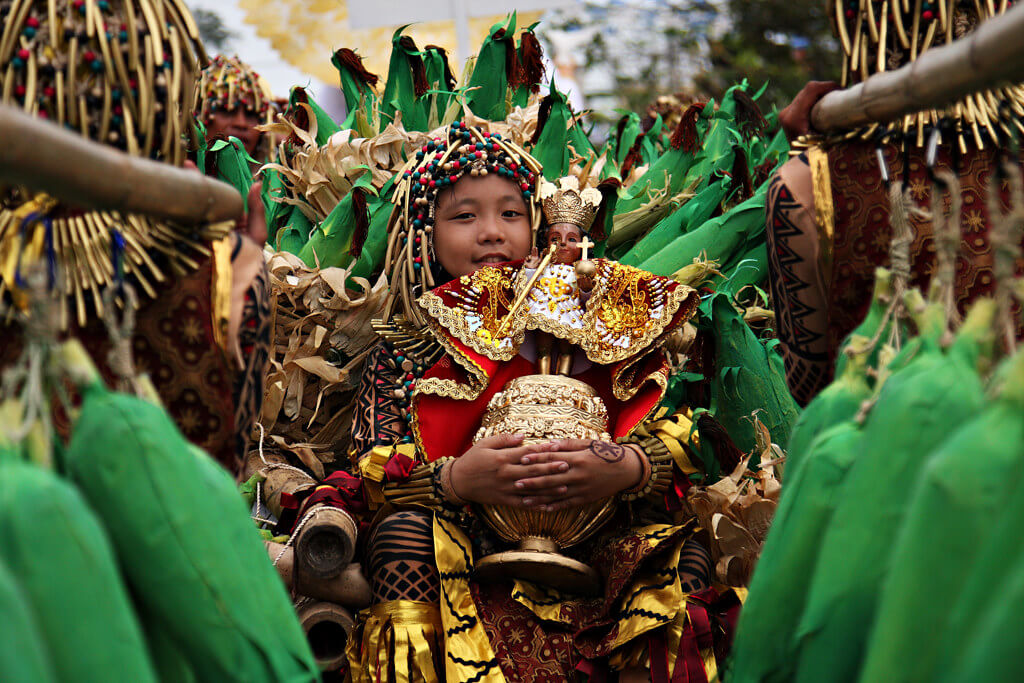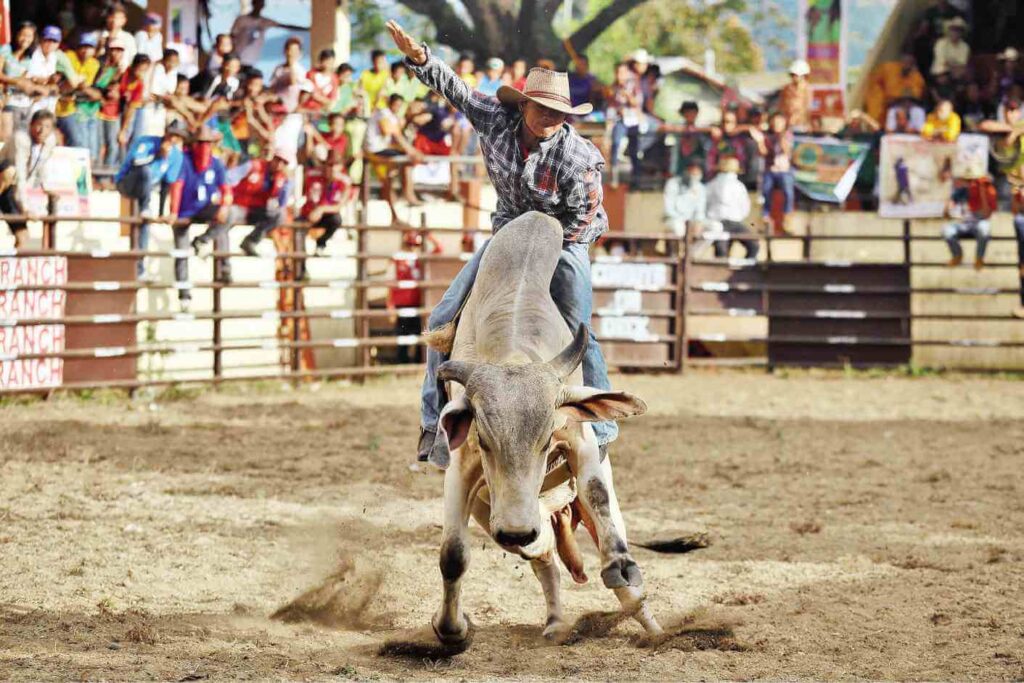The Cultural Celebration
The Ati-Atihan Festival is a colorful and exuberant celebration rooted in both indigenous and religious traditions. Celebrated every 3rd week of January, this unique festival is named in honor of the indigenous Ati tribe and holds deep cultural and religious significance.
Significance of Ati-Atihan
The Ati-Atihan Festival is a jubilant homage to the indigenous Ati tribe of Aklan, reflecting the region’s rich cultural heritage. According to MyBoracayGuide, the festival’s origin can be traced back to the Ati people, who were the original settlers of the island of Panay. The name “Ati-Atihan” means “to be like Atis” or “to make believe Ati,” emphasizing the celebration’s connection to the Ati tribe.
Over the years, the Ati-Atihan Festival has evolved to include a significant religious aspect dedicated to Santo Niño (the Holy Child Jesus). This dual significance highlights the festival’s unique blend of indigenous and Christian traditions, making it a profound cultural spectacle that draws both locals and visitors.
Fusion of Indigenous & Religious Practices
Ati-Atihan represents a seamless fusion of indigenous cultural practices with Catholic faith. Initially, the festival was a celebration of the anito (ancestor spirits) and other indigenous beliefs. However, with the arrival of Spanish missionaries, Christian meanings were introduced, gradually incorporating into the festival’s fabric (Wikipedia).
Today, the festival is a vibrant week-long celebration that includes music, dance, elaborate costumes, parades, and feasts (MyBoracayGuide). This fusion is evident in the festival’s various activities, where participants don traditional Ati-Atihan costumes and perform indigenous dances to the rhythm of drums, while also engaging in religious processions and ceremonies honoring Santo Niño.
A notable aspect is the communal participation promoted by this festival. As highlighted by Festive Pinoy, locals and visitors join together in spirited chants and dances, strengthening intergenerational bonds and fostering unity within diverse communities.
For more on how these traditions are visually expressed, visit our article on Ati-Atihan Festival costumes.
The Ati-Atihan Festival stands as a vibrant testament to the cultural richness and religious devotion of the Filipino people, showcasing how historical practices and spiritual beliefs beautifully intertwine. Explore more about the rich history of Ati-Atihan to understand its evolution and significance.
Music and Dance Extravaganza
The Ati-Atihan Festival’s vibrant energy and pulsating rhythms bring the streets of Kalibo to life. This section will explore the core of the festival: its electrifying musical performances and dynamic dance showcases.

Photo by Joel Garcia
Vibrant Musical Performances
The Ati-Atihan Festival is renowned for its lively and celebratory atmosphere, created by the participation of over 80 groups performing a diverse array of music. The dynamic atmosphere is generated by rhythmic drumbeats and traditional music, making the event truly unforgettable.
Musicians use indigenous instruments like the tambol (drums) and xylophones, mixing them with modern sounds, creating a unique fusion. These performances are more than just music; they reflect the rich cultural heritage and ancestral stories passed down through generations (Festive Pinoy).
| Performance Element | Description |
|---|---|
| Drumbeats | Continuous and rhythmic, setting the festival’s pace |
| Instruments | Mix of traditional (tambol, xylophones) and modern |
| Music Style | Blend of indigenous sounds and popular global tunes |
| Musical Groups | Over 80, each contributing their unique style |
Among the eclectic mix, popular global tunes like Lou Bega’s “Mambo Number 5” and “Happy Days Are Here Again” also make appearances, showcasing the impact of globalization on Filipino culture.
Energetic Dance Showcases
Dance is an integral part of the Ati-Atihan Festival. Throughout the event, participants engage in energetic dance routines that mirror the rhythm of the drumbeats and the festive music. These well-choreographed dances immerse the viewers in a visual feast that celebrates both the Santo Niño and the indigenous Atis, known as Negritos.
The dancers, often in elaborate and colorful costumes, showcase athleticism and synchronicity as they move through the streets. Each group tells a story through their movements, depicting historical events, cultural myths, and communal prayers.
| Dance Element | Description |
|---|---|
| Costumes | Elaborate and colorful, often representing tribal affiliations |
| Dance Style | Energetic and coordinated, involving group formations |
| Themes | Historical events, cultural myths, and prayers |
| Participants | Hundreds, including children and elders |
Competitions are held on the final day, where different tribal groups vie for recognition and prizes based on their performance, creativity, and presentation. This competitive spirit adds another layer of excitement to the festival, making it an event eagerly anticipated by all.
For more information on the elaborate costumes and symbolism in attire, explore our article on ati-atihan festival costumes. To dive deeper into the dance aspects, visit our section on ati-atihan festival dance.
Festive Customs and Attire
The Ati-Atihan Festival is renowned for its vibrant and colorful customs, particularly evident in its elaborate attire and symbolic decorations.
Elaborate Costumes and Parades
Ati-Atihan’s costumes are a vibrant tapestry of colors, intricate designs, and traditional attire that pay homage to the indigenous Ati culture. These costumes are accentuated with beads, feathers, and other ornate elements. Participants don these elaborate costumes and take part in parades that fill the streets with radiant colors and infectious energy.
| Costume Element | Description |
|---|---|
| Color | Bright hues such as red, yellow, and green symbolize vibrancy and festivity. |
| Materials | Feathers, beads, and traditional fabrics are commonly used. |
| Design | Intricate patterns inspired by indigenous art and history. |
| Accessories | Masks, headdresses, and body paints enhance the overall look. |
The costumes are not just for show; they are a crucial aspect of the festival, representing the wearer’s creativity and connection to their heritage. To learn more about the intricate designs and creation of the festival’s attire, visit our page on ati-atihan festival costumes.
Symbolism in Attire and Decor
The attire and decor at the Ati-Atihan Festival are rich in symbolism. The costumes symbolize identity, creativity, and resilience. They feature intricate designs inspired by local traditions and are visually rich in symbolism, narrating tales of ancestry while showcasing a connection to heritage (Festive Pinoy).
| Symbolic Element | Meaning |
|---|---|
| Beads | Represent unity and community bonds. |
| Feathers | Symbolize freedom and a connection to nature. |
| Colors | Each color carries specific meanings, such as red for courage and green for life. |
| Masks | Reflect the historical and spiritual narratives of the Ati people. |
The festival also involves participants dancing, playing music, and praying for three days in honor of the Santo Niño and in remembrance of the indigenous Atis, known as the Negritos (Intensions Journal). The celebration culminates in a grand procession on the third Sunday of January, where the symbolic clothing and decor are on full display.
For more information on the history and significance of these celebrations, visit our detailed article on ati-atihan festival history.
The Ati-Atihan Festival promotes communal participation, with locals and visitors joining together in spirited chants and dances, thus strengthening intergenerational bonds (Festive Pinoy). To discover more about the festival’s immersive activities, check out our page on ati-atihan festival activities.
Communal Traditions and Heritage
The Ati-Atihan Festival is a vibrant celebration that goes beyond music and dance. It embodies rich communal traditions and heritage through various customs.
Culinary Offerings and Communal Participation
One of the highlights of the Ati-Atihan Festival is its delectable culinary offerings. Traditional dishes such as Suman, a sticky rice delicacy, and Inasal na Manok, grilled chicken marinated with local spices, are staples of the festival. These foods invite attendees to savor the flavors that are deeply rooted in regional tradition and craftsmanship.
| Traditional Dish | Description |
|---|---|
| Suman | Sticky rice delicacy wrapped in banana leaves |
| Inasal na Manok | Grilled chicken marinated with local spices |
The festival promotes communal participation where locals and visitors join in spirited chants and dances. This participation fosters intergenerational bonds and unity within diverse communities.
Strengthening Bonds Through Festive Celebrations
The Ati-Atihan Festival is not just a celebration; it’s a medium to strengthen communal bonds. The grand competition on the last day of the festival is a focal point where tribes contend for attention and prizes, followed by a massive procession involving thousands carrying images of the Santo Niño (Wikipedia). This event promotes unity and shared cultural heritage.
Moreover, the Ati-Atihan Festival isn’t confined to Kalibo alone. It extends to other towns in Aklan such as Ibajay, Lezo, Malinao, and even in other provinces like Antique and Capiz. Similar festivals like Dinagyang in Iloilo, Halaran in Capiz, and Binirayan in Antique share the same spirit.
For more about the activities and elements of the festival, visit ati-atihan festival activities.
By participating in shared activities, from culinary feasts to musical and dance performances, the Ati-Atihan Festival serves as a vibrant testament to community unity and cultural heritage, ensuring that the tradition is celebrated by future generations. Learn more about the rich history of this festival in ati-atihan festival history.
Share this post: on Twitter on Facebook



